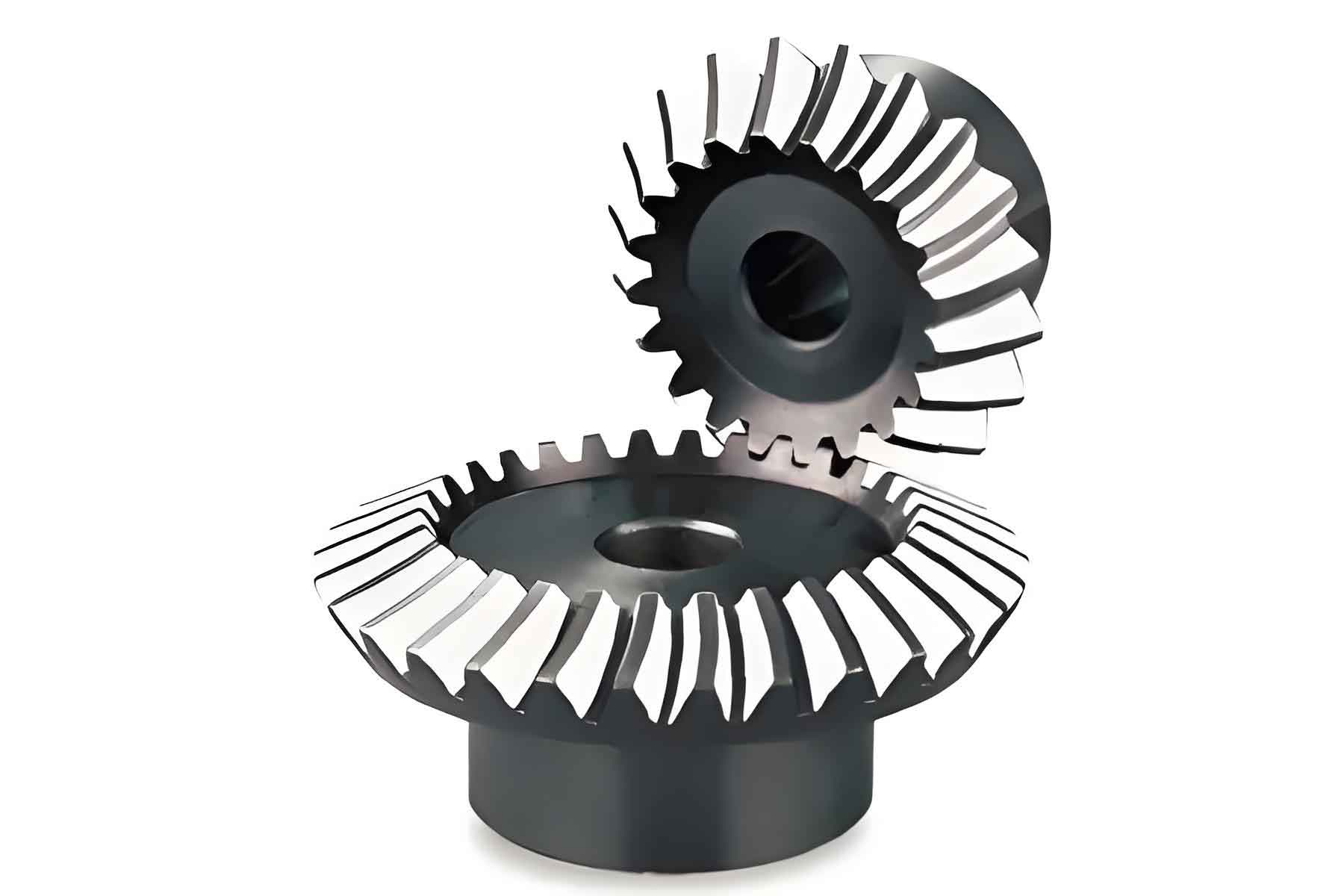In the rapidly evolving landscape of Industry 4.0, digital twins and predictive maintenance are revolutionizing the management and optimization of mechanical systems. Bevel gear systems, critical components in numerous industrial applications, stand to benefit significantly from these advanced technologies. This article explores the integration of digital twins and predictive maintenance for bevel gear systems, highlighting their impact on enhancing performance, reliability, and efficiency.

Understanding Digital Twins
A digital twin is a virtual replica of a physical asset, system, or process. For bevel gear systems, a digital twin replicates the physical characteristics, operational parameters, and environmental conditions of the gear system. This virtual model is continuously updated with real-time data from sensors and other sources, enabling comprehensive monitoring and analysis.
Components of a Digital Twin for Bevel Gear Systems:
- Data Acquisition:
- Sensors and IoT devices collect data on temperature, vibration, load, and lubrication levels.
- Historical data from maintenance records and operational logs.
- Simulation Models:
- 3D models of bevel gear geometry.
- Finite element analysis (FEA) models for stress and strain analysis.
- Computational fluid dynamics (CFD) models for lubrication flow analysis.
- Analytics and Machine Learning:
- Predictive algorithms to forecast potential failures.
- Machine learning models to identify patterns and anomalies in operational data.
- User Interface:
- Dashboards for real-time monitoring.
- Visualization tools for 3D modeling and simulation results.
Predictive Maintenance for Bevel Gear Systems
Predictive maintenance leverages data analytics and machine learning to predict when maintenance should be performed. This approach contrasts with traditional reactive maintenance (fixing after failure) and preventive maintenance (scheduled at regular intervals). For bevel gear systems, predictive maintenance can significantly reduce downtime, extend the lifespan of components, and optimize maintenance costs.
Benefits of Predictive Maintenance for Bevel Gear Systems:
- Reduced Downtime:
- Early detection of potential issues allows for maintenance to be scheduled during non-peak times.
- Extended Gear Life:
- Timely interventions prevent severe damage, thus extending the operational life of bevel gears.
- Cost Savings:
- Minimizes the need for emergency repairs and reduces inventory costs for spare parts.
- Improved Safety:
- Prevents catastrophic failures that could pose safety hazards.
Implementation of Digital Twins and Predictive Maintenance
Steps to Implement Digital Twins and Predictive Maintenance:
- Sensor Integration:
- Install sensors to monitor key parameters such as temperature, vibration, load, and lubrication in bevel gear systems.
- Data Collection and Storage:
- Establish a robust data infrastructure to collect, store, and process real-time data from sensors.
- Digital Twin Development:
- Create a detailed 3D model of the bevel gear system.
- Develop simulation models for stress analysis, lubrication flow, and other critical parameters.
- Analytics and Machine Learning:
- Implement machine learning algorithms to analyze data and predict potential failures.
- Use predictive analytics to determine optimal maintenance schedules.
- User Interface Design:
- Develop user-friendly dashboards and visualization tools for real-time monitoring and analysis.
Case Study: Digital Twins and Predictive Maintenance in Bevel Gear Systems
Case Study 1: Industrial Manufacturing
An industrial manufacturing company implemented digital twins and predictive maintenance for their bevel gear systems used in heavy machinery. The following steps were taken:
- Sensor Integration:
- Installed vibration sensors, temperature sensors, and load sensors on all bevel gear systems.
- Data Infrastructure:
- Established a centralized data repository to store real-time sensor data and historical maintenance records.
- Digital Twin Development:
- Created 3D models of all bevel gear systems and developed FEA models for stress analysis.
- Machine Learning Algorithms:
- Implemented machine learning models to analyze vibration data and predict bearing wear and gear tooth damage.
- User Interface:
- Developed a dashboard for real-time monitoring of bevel gear health and predictive maintenance alerts.
Results:
- Reduced Downtime:
- Maintenance could be scheduled during planned downtimes, resulting in a 30% reduction in unplanned outages.
- Extended Gear Life:
- Timely maintenance interventions extended the operational life of bevel gears by 20%.
- Cost Savings:
- Maintenance costs were reduced by 25% due to optimized scheduling and fewer emergency repairs.
Table 1: Key Performance Indicators Before and After Implementation
| KPI | Before Implementation | After Implementation |
|---|---|---|
| Unplanned Downtime | 50 hours per month | 35 hours per month |
| Maintenance Costs | $100,000 per year | $75,000 per year |
| Gear Life Expectancy | 5 years | 6 years |
| Safety Incidents | 5 incidents per year | 2 incidents per year |
Challenges and Future Directions
Challenges in Implementing Digital Twins and Predictive Maintenance:
- Data Integration:
- Integrating data from multiple sources and ensuring data quality can be challenging.
- Model Accuracy:
- Developing accurate simulation models requires comprehensive understanding and detailed data of bevel gear systems.
- Cost:
- Initial setup costs for sensors, data infrastructure, and software can be high.
- Skill Requirements:
- Skilled personnel are needed to develop, implement, and maintain digital twins and predictive maintenance systems.
Future Directions:
- Advanced Analytics:
- Integration of more sophisticated analytics and artificial intelligence to improve prediction accuracy.
- IoT and Edge Computing:
- Enhanced use of IoT devices and edge computing to process data locally and reduce latency.
- Augmented Reality (AR):
- Use of AR for maintenance technicians to visualize digital twin data and perform maintenance tasks more effectively.
- Standardization:
- Development of industry standards for digital twins and predictive maintenance to ensure interoperability and scalability.
Conclusion
The integration of digital twins and predictive maintenance in bevel gear systems marks a significant advancement in mechanical system management. By enabling real-time monitoring, precise simulations, and data-driven maintenance strategies, these technologies offer substantial benefits in terms of reduced downtime, extended gear life, cost savings, and improved safety. As industries continue to embrace digital transformation, the adoption of digital twins and predictive maintenance for bevel gear systems is poised to become a standard practice, driving efficiency and reliability to new heights.
